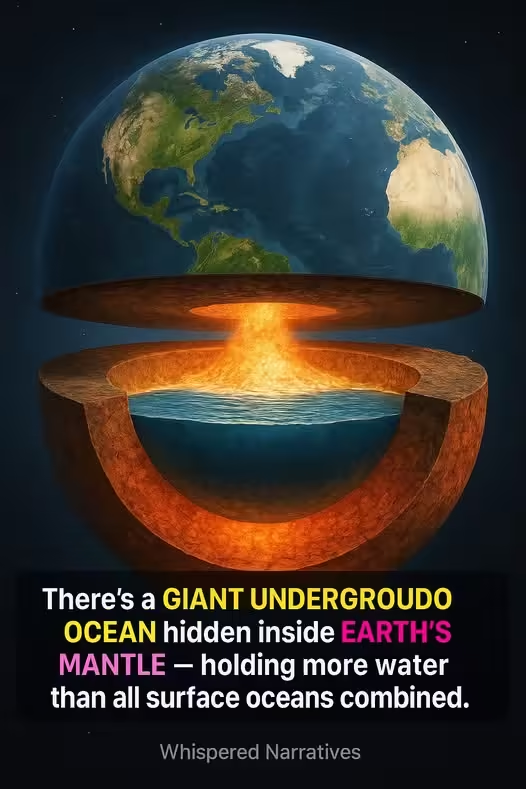Earth’s Hidden Ocean: A Water World Beneath Our Feet
When we think of oceans, we imagine vast, free-flowing expanses of blue stretching across the Earth’s surface. But what if we told you there’s another ocean — a colossal one — not above ground, but locked away deep beneath our feet?
Roughly 700 kilometers (435 miles) below Earth’s surface, in the transition zone between the upper and lower mantle, scientists have discovered a mineral called ringwoodite. At first glance, ringwoodite may not appear extraordinary, but its crystal structure has an astonishing property: it can trap and hold significant amounts of water — not as liquid, but as hydroxide ions bonded within its structure. This discovery has fundamentally changed our understanding of Earth’s water cycle and even the origin of our planet’s oceans.
A Reservoir Three Times the Size of Our Oceans
Through seismic wave analysis — essentially listening to how waves from earthquakes travel through different layers of Earth — researchers detected anomalies suggesting the presence of water-rich materials deep underground. Later, laboratory experiments mimicking the extreme pressure and temperature conditions of the mantle confirmed the capacity of ringwoodite to hold water.
The most mind-blowing part? Scientists estimate that the amount of water trapped in ringwoodite beneath the surface could be three times greater than all the water in Earth’s surface oceans combined. This hidden reservoir isn’t a traditional body of water — no flowing currents or marine life — but it’s still a massive storage system of H₂O, intricately woven into the mineral fabric of the Earth’s mantle.
Shifting Our Understanding of Water’s Origins
Traditionally, many scientists believed that Earth’s water arrived via icy comets and asteroids that bombarded the planet billions of years ago. While that theory still holds some merit, the discovery of deep-Earth water suggests a complementary or alternative idea: that much of our planet’s water may have originated from within, seeping outward over geological time through volcanic activity and tectonic processes.
This internal source of water paints Earth as a “wet planet” from the inside out, not just coated with water on the surface but thoroughly infused with it down to its rocky core.
Why This Matters
This subterranean ocean may be quietly driving some of Earth’s most dramatic natural phenomena. Deep mantle water affects the melting point of rocks, influences the behavior of tectonic plates, and can fuel explosive volcanic eruptions when it rises toward the surface.
Furthermore, understanding how water is stored and circulated within the Earth has broader implications for planetary science. If such hidden oceans exist on Earth, could they also be present on other rocky planets? Could this mean that the potential for liquid water — and perhaps life — is more common in the universe than we thought?

Still More to Discover
As seismic imaging techniques and experimental methods continue to improve, scientists are eager to explore this mysterious reservoir further. What exactly is the volume of water stored? How does it move? How old is it? And what secrets does it still hold about Earth’s past — and future?
What’s clear is this: Earth is far more complex and interconnected than it appears on the surface. Beneath our continents and oceans lies a hidden world of water that could rewrite the story of our planet’s formation, its dynamic systems, and perhaps even its place in the cosmos.
In the end, our planet might not just be blue on the outside — it might be blue all the way through. 🌍💧



